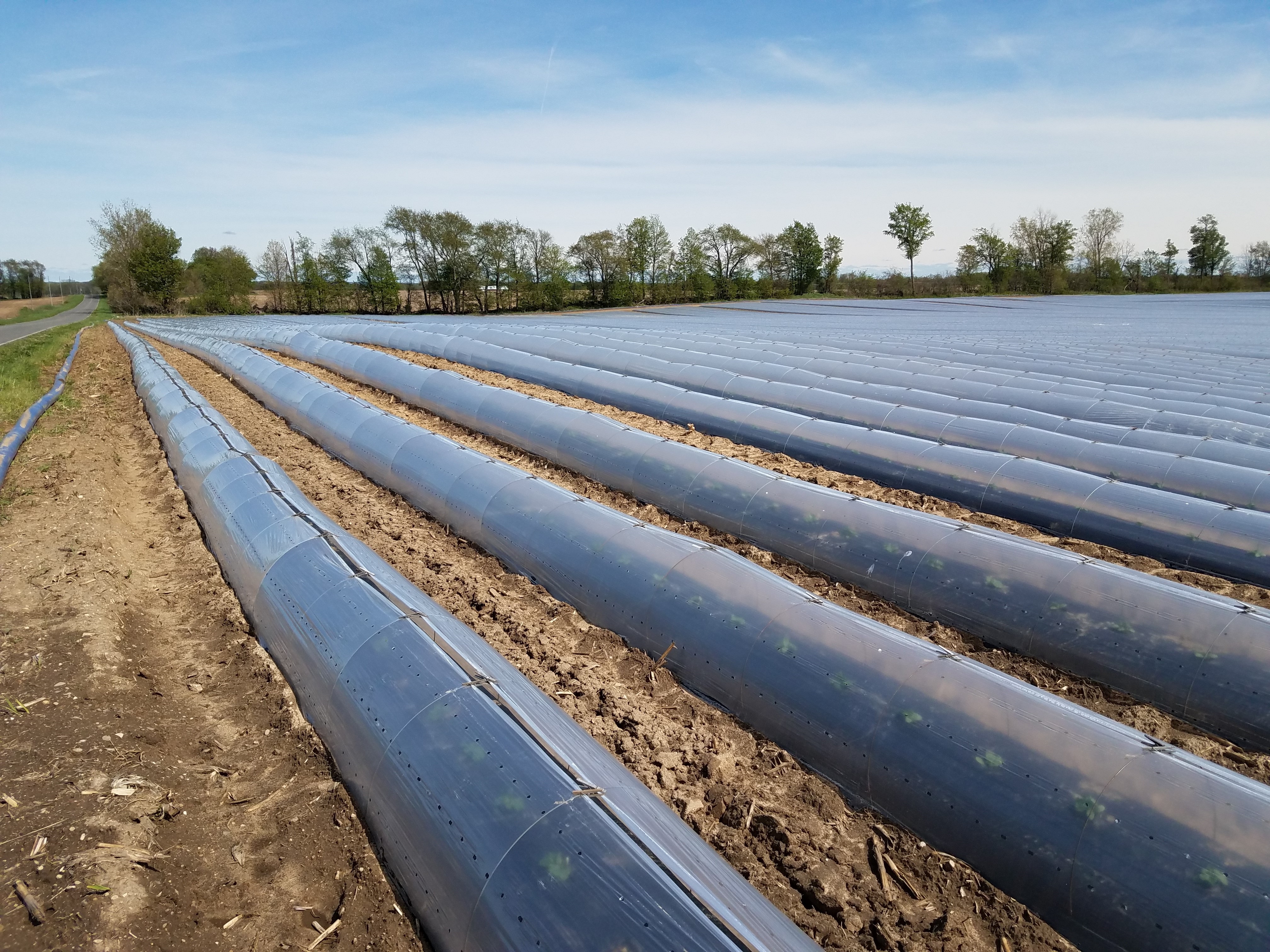Southwest Michigan vegetable update – May 15, 2019
It is beginning to look a bit better in southwest Michigan.

Weather
We are at 143 growing degree days (GDD) base 50 degrees Fahrenheit for 2019 compared to 214 GDDs for 2018 and 254 GDDs for the five-year average. We continue to lag further behind each week in heat units. We had about 1 inch of rain over the past week and it rained six out of the seven days. No sooner does the ground get dry enough to work and it rains again. Cool temperatures continue to limit growth of planted crops. Temperatures ranged from 34 F to 71 F. Frost did occur in some areas on May 11 and May 14, but no reports of damage.
Field activity
Conditions were suitable on some sites over the weekend and again beginning Tuesday, May 14, for fieldwork and growers were laying plastic, planting or both. Growers feel they are about two weeks behind getting fields ready but not yet that far behind in planting. Transplants are being moved out of the greenhouse to get ready for field planting.
Crop reports
Asparagus is on the eighth to tenth pick stage. I have not heard of any asparagus beetle activity but they should be active given the slightly warmer temperatures we have had. Look for adults and signs of egglaying.
Early potatoes are emerging, which means Colorado potato beetles cannot be too far away. They will be in the adult phase at this time and they can be especially problematic on small plants if numbers get too large. Growers who saved seed from last year may notice some internal browning (Photo 1) when they cut their seed prior to planting. These symptoms are typical of heat stress during tuber sizing. August and September of 2018 was quite warm. Plant emergence will vary depending on symptom severity but developing plants will grow normally.
Sweet corn emergence has been delayed and growth slowed due to below normal temperatures. Emerged plants will be more yellow-green due to the cool soil temperatures restricting nutrient uptake. Color will return as soon as the soil warms. Bare-soil temperatures are currently averaging in the mid to high 50s.

Some cucumber, yellow squash and zucchini have been transplanted into plastic and covered with low tunnels (Photo 2). Some have also been direct seeded with no covers. Covers have not had as great an affect as desired this year due to cloudy weather. They work best when we have more sunny days.
Sweet onion and garlic growth is slow, especially onions. Onions were transplanted late due to weather and soil conditions and then temperatures have been cool after transplanting. This could affect bulb size since there is a direct correlation between final bulb size and plant size at the time the day length signal to bulb occurs. That signal occurs as the days get longer and that will happen by the end of May.
Garlic is also showing some leaf yellowing in the older leaves. It is my experience that is just the way it is with garlic. I have found no way to prevent it. It may just be the older leaves shutting down. No foliar fertilizer treatment I have ever applied has had an effect.



 Print
Print Email
Email

